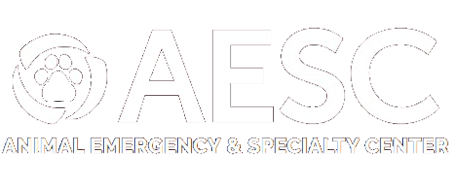Minimally Invasive Surgery for Pets: Types, Benefits, and What to Expect
July 7, 2025 · Veterinary Services
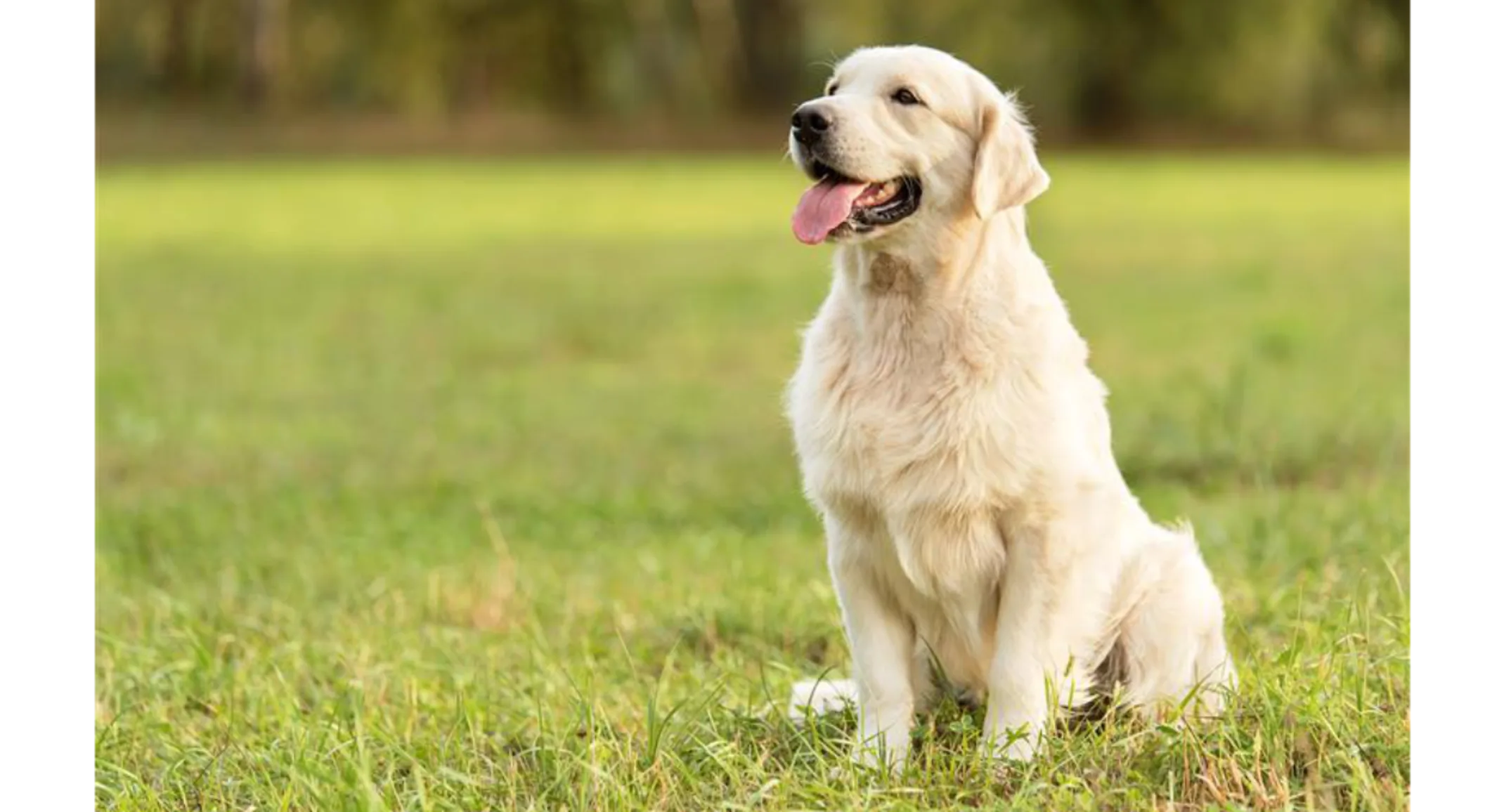
In this post: Discover the benefits of minimally invasive surgery for pets. Learn about laparoscopic, thoracoscopic, and arthroscopic techniques and what these procedures look like here at AESC in Parker.
🐾 What is minimally invasive surgery?
Veterinary surgery is constantly evolving, and minimally invasive surgery is emerging as one of the more advanced surgical techniques in the field. Minimally invasive surgery is performed using tiny incisions, through which the surgeon inserts specialized instruments and a small camera. The camera provides high-definition video in real time to guide the surgical instruments. While traditional open surgery may require large incisions and longer recovery times, minimally invasive surgery uses smaller incisions and reduces trauma to tissues, resulting in less pain and faster recovery.
🐾 What are the types of minimally invasive surgery?
Laparoscopic
In laparoscopic surgery, the surgeon makes two to three small incisions into the abdomen for the camera and instruments that are used to delicately handle bodily tissues. Carbon dioxide gas is used to inflate the abdomen, which creates space for visibility and maneuverability. Several abdominal surgeries can be performed laparoscopically.
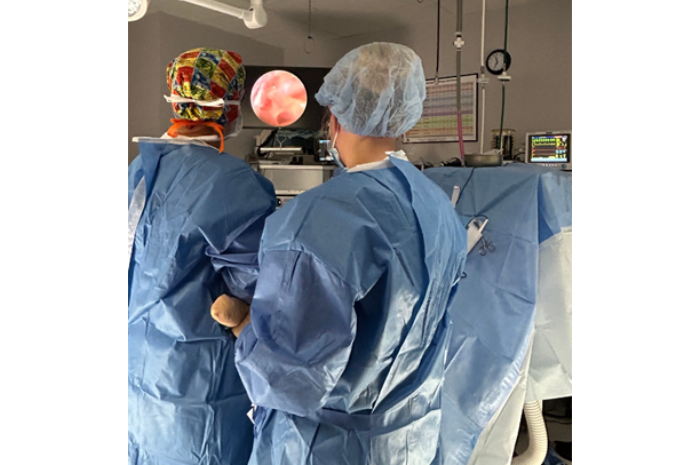
Laparoscopic spay
Common types of laparoscopic surgery
Laparoscopic spay
Prophylactic gastropexy to prevent GDV
Liver biopsies
Cryptorchid (undescended testicle) removal

Laparoscopic Liver Biopsy
Thoracoscopic
Thoracoscopic surgery is a minimally invasive surgical technique used to diagnose and treat conditions within the chest cavity (thorax). It’s similar to laparoscopic surgery, but instead of operating in the abdomen, it focuses on organs within the chest, such as the lungs and heart.
Common types of thoracoscopic surgery
Lung lobe removal (lobectomy)
Removal of masses in the chest
Pericardial window (for heart-related issues)
Arthroscopic
Arthroscopic surgery (arthroscopy) is used to diagnose and treat joint problems. This minimally invasive technique is performed by orthopedic surgeons and involves small incisions and a camera to visualize and repair damage within the joint. The camera is referred to as an arthroscope.
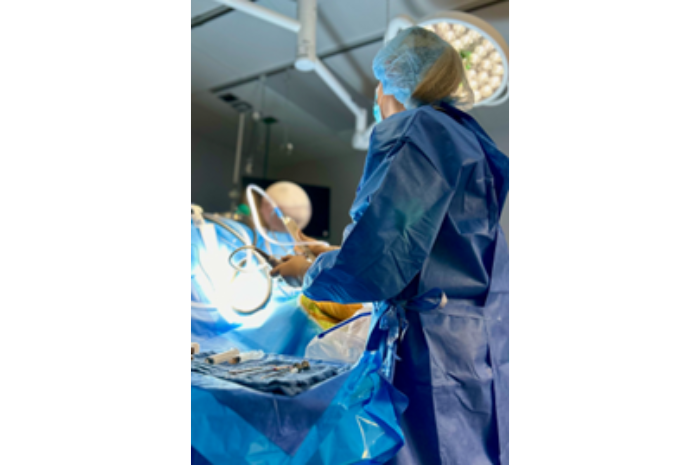
Stifle (knee) arthroscopy
Common uses:
Evaluation of the cranial cruciate ligament and menisci before TPLO surgery
Removal of bone/cartilage fragments in cases of elbow dysplasia and osteochondrosis dissecans (OCD) of the shoulder
🐾 What are the benefits of minimally invasive surgery?
Less pain
Faster recovery
Improved surgical precision
Lower complication rate
Because the surgical incisions are smaller and tissue handling is delicate and kept to a minimum, pets tend to be quite comfortable after undergoing minimally invasive surgery. Moreover, with less pain and smaller incisions to heal, the majority of healing and recovery happens within about 7 days, compared to 10-14 days for traditional surgery. With smaller incisions, minimally invasive surgery can reduce surgical site infection risk. While the common, traditional spay surgery can also be performed using a small incision, adding a laparoscope enhances visualization tremendously, minimizing bleeding risk.
🐾 What can I expect for my pet undergoing minimally invasive surgery at AESC?
Before Surgery
Consultation: You and your pet meet the surgeon who will perform the procedure. The surgeon will explain the procedure in depth and answer any questions you have. Consultations are between 45 minutes and one hour.
Pre-surgical exam & lab work: Your pet will receive a full physical exam and bloodwork to ensure they’re healthy for anesthesia, or if they need an adjusted anesthetic protocol. Oftentimes, if your pet has had bloodwork at another clinic within the last 3-6 months, it does not need to be repeated.
Fasting: Pets must fast (no food) for 8–12 hours before surgery. This means no food after midnight, but water is OK.
Anesthesia plan: Our board-certified anesthesiologist will prepare a tailored plan based on your pet’s medical history and temperament (i.e. vibes) to ensure your pet is safe, comfortable, and as stress-free as possible. Once your pet is anesthetized, our anesthesiologist will perform an ultrasound-guided nerve block to numb the area before surgery begins.
Expect a phone call from our team when the procedure starts.
During Surgery
Small incisions: Only 1–3 tiny incisions are made to insert a high-definition camera and surgical instruments.
Real-time imaging: The surgeon uses video guidance for enhanced precision.
Consistent pain management (analgesia): A long-acting (up to 3 days!) numbing agent is applied to the incision at the end of surgery as part of a comprehensive pain management protocol.
Additional Pain Management
While numbing agents are the most effective form of pain management, your pet will also receive IV pain medication and oral medication to go home. Give all prescribed medications as directed.
After Surgery
Expect another phone call right after surgery to update you on your pet’s status.
Faster recovery: Waking up comfortable and alert, pets are ready for a light lunch and to go home the same (for spay, gastropexy, liver biopsy, and some arthroscopic) or the following (thoracoscopic and some arthroscopic) day.
Smaller wounds: Tiny incisions heal faster and are easier to manage at home.
Monitor the incision site daily for redness, swelling, or discharge, and contact us right away if there are any concerns.
Prevent licking or chewing with an Elizabethan collar.
Minimal activity restrictions: Light leash walks and no rough play for 5–7 days.
Follow-up: Stitches are dissolvable and do not need to be removed, but a brief, complimentary post-op visit is recommended to check that the incision is healed. For pets who are anxious in the hospital or pet owners who live far away, sometimes an emailed photo of the incision works better.
Watch our patient Betty’s experience with laparoscopic spay at AESC!
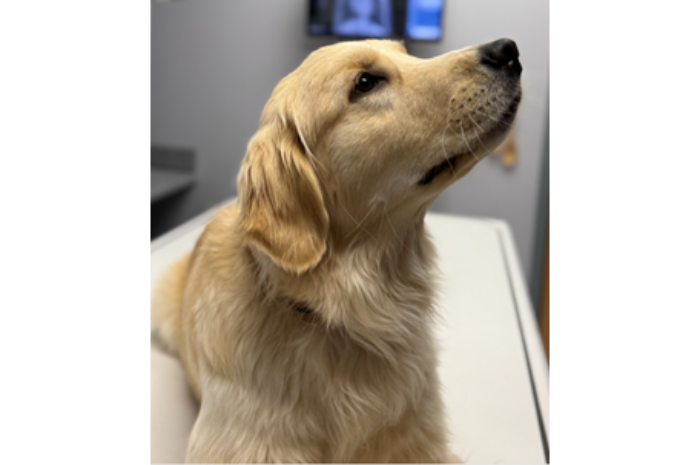
Minimally invasive surgery is part of a growing shift in veterinary medicine toward gentler, more advanced care. It is important to note that while any surgery can have complications, minimally invasive surgery performed by a well-trained and experienced surgeon can reduce that risk. All of AESC’s board-certified surgeons are trained and experienced in minimally invasive surgical techniques for both soft tissue and orthopedic surgery. Our board-certified anesthesiologist ensures utmost safety and comfort using locoregional analgesia to numb the abdomen, chest, or joints undergoing surgery.
Should your pet need surgery, ask your veterinarian if there is a minimally invasive option. If you’d like to book a consultation with AESC, you can do so online or call us at 720-842-5050.
